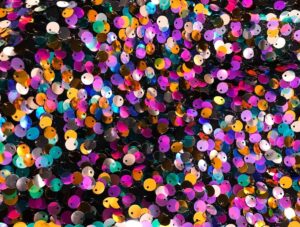Deciding what to read next can be a real challenge. With so many books out there and not nearly enough time to read them all, how do we make sure our next read will be worth it?
Everyone at Tate & Clayburn is connected by a love of language, so we’re fortunate to be surrounded by avid readers with plenty of excellent book recommendations. If your own reading list is looking a bit stale lately and you catch yourself asking ‘What should I read next?’, we’ve put together some ideas for reading in May.
This post contains an assortment of interesting book suggestions for you to explore, spanning a range of topics and genres from science fiction to meditations on grief and loss. We asked each member of our team which book they’d recommend for May, and here’s what they said:
Annabelle: Birnam Wood – Eleanor Catton

By Joanne Francis on Unsplash
‘A real page-turner that also holds a mirror up to contemporary society’
I don’t want to alarm anyone who is familiar with Catton’s previous novel, The Luminaries, which really is brilliant but hefty, clocking up nearly 850 pages. Birnam Wood, by contrast, is a very palatable 400 pages. Billed as an ‘eco-thriller’, the book follows an activist group in Catton’s native New Zealand which is battling an American billionaire for control of an abandoned farm. General hijinks ensue, interspersed with biting political commentary. It’s a real page-turner that also holds a mirror up to contemporary society, and I’ve found it very hard to tear myself away from it for the past couple of weeks! (And, as a side note, if you have a particularly long holiday coming up, I would heartily recommend The Luminaries too, as it’s one of my favourite books – so I’ve snuck in two recommendations for the price of one.)
Izzy: NW – Zadie Smith

By Ben Allan on Unsplash
‘It captures London perfectly’
As a born-and-raised Londoner, it’s taken me far too long to get into the works of Zadie Smith. I picked up NW because I used to live near Harlesden, where part of the book takes place. It captures London perfectly, of course, because Smith grew up in Willesden and can describe first-hand the teenage laziness of wandering around the city in the summer.
NW is split into four parts, each following a different character. Leah, Natalie, Felix and Nathan are charming but complicated, each tied up in their own patterns of self-destruction. It’s not the happiest book out there, but I absolutely loved it.
Rosie: Dune – by Frank Herbert

By Alexander Mils on Unsplash
‘A great choice if you’re looking for an epic story to lose yourself in’
After recently watching the Dune films, I was curious to see how the novels compared. For those who haven’t heard of Dune (where have you been?!), it’s one of the best-selling sci-fi sagas ever – and relates the trials and tribulations of the Atreides family in a futuristic, interplanetary world. There are six novels altogether, and Dune is the first in the series. A great choice if you’re looking for an epic story to lose yourself in – and have quite a few hours to spare.
Peter: Grief Is the Thing with Feathers – Max Porter

By JJ Shev on Unsplash
‘But the book is more than just a tale; it’s a poem, a piece of visual art, a meditation, a thing of beauty’
I sometimes feel it’s difficult to know what to give someone who’s lost a loved one, or to know what to read when you’re in that position yourself, and Grief Is the Thing with Feathers came along at just the right time. Max Porter tells the (sort of) story of a grieving writer and father who is coming to terms with the death of his wife. In the midst of all this there arrives a crow, or a “Crow” – we’re never quite sure, which is of course the point – a kind of caretaker for the family through their time of need.
But the book is more than just a tale; it’s a poem, a piece of visual art, a meditation, a thing of beauty. I started out trying to figure out what was going on, spent a few pages feeling frustrated that my questions weren’t being answered, and then let myself go. I was glad I had.
Alice: Loved and Missed – Susie Boyt

By Danny G on Unsplash
‘Every time I read it, I glean something new’
I rarely re-read novels (so many books, so little time!) but I’ve twice broken this habit for Loved and Missed. It tells the story of a grandmother, Ruth, who ‘rescues’ her granddaughter from the care of her much troubled daughter. Loved and Missed covers complex issues – addiction, grief, parenthood, loyalty are just the first to come to mind – but these challenging themes are beautifully understated. What sings out for me is Boyt’s celebration of the many small joys and moments that build our bonds and, by extension, our lives. Every time I read it, I glean something new. In fact, it might just be time to pick it up again…
Therese: Change Your Diet, Change Your Mind – Dr Georgia Ede

By Jacopo Maia on Unsplash
‘She also offers guidance in the form of elimination diets that will help individuals distinguish between friend and foe in the food world’
This book is not simply for those who suffer from anxiety, depression or food obsessions, but for anyone who is curious to learn about the best foods to nourish and protect the brain. I found this book fascinating as Dr Ede challenges current thinking regarding the treatment of psychiatric problems solely with medication and puts forward compelling arguments (citing scientific papers, biochemistry, neuroscience and botany) for improvements in treatment through nutrition.
To summarise: prioritise protein and avoid sugar and processed foods. As well as taking us on a tour of brain chemistry, Dr Ede also looks at different food groups and their effects on the brain. She also offers guidance in the form of elimination diets that will help individuals distinguish between friend and foe in the food world. The writing is easy to read, even for a non-scientist like me and I’ve already read it twice! Mantra: ‘Eat whole foods, nothing else’.
Isaac: 10:04 – Ben Lerner

By Artem Zhukov on Unsplash
‘Prose that is at once deeply beautiful and painfully witty’
The best books I’ve read have made me laugh aloud in my own company, but none quite as frequently as 10:04, Ben Lerner’s poetic exploration of time and art. Lying very much on the edge of fiction, Lerner’s novel is partially an account of its own writing. It opens with an intensely amusing description of its protagonist eating an expensive octopus as part of a business meeting with his publisher, following the success of his first book. Among the backdrop of New York’s cosmopolitan art and publishing world, the novel investigates the personal and public narratives we create to make sense of our lives, and the ruptures that occur when they break down.
Lerner shows us that to write is an act of curation, rather than production, something that emerges through the rich vignettes of others’ stories of parenthood, loss, alienation, emigration, art and love. He imbricates all this in prose that is at once deeply beautiful and painfully witty. If you have the opportunity, read the opening scene – it’s brilliant.
We want to hear from you!
We hope these recommendations have offered plenty of inspiration to furnish your reading list with a few great books. If any of the texts featured have piqued your interest, or if you have any recommendations yourself, please share your thoughts on our LinkedIn page.
For each of us, reading is at the core of our personal and professional lives. So if you need an editor or proofreader to help your writing be as impactful as it can be – whether it’s a novel, business copy or other – we’d love to hear from you. To find out more about our services, visit our proofreading or copyediting pages, or get in touch with our team at [email protected].


